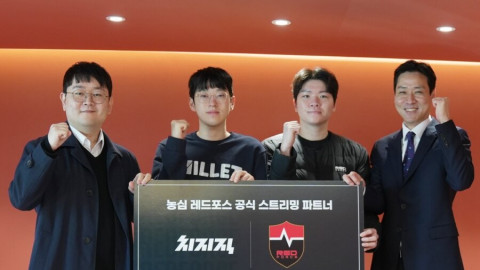
The 2022 League of Legends World Championship had many exciting developments: record-breaking viewing numbers, exciting storylines, and the greatest final the tournament has ever seen. However, tucked away in the event’s venue — San Francisco’s Chase Center — were even more exciting development’s for Riot Games and esports. One of them was an exciting media presentation on Project Stryker — something claimed will revolutionize esports broadcast production.

A project the company has been working on for the past three years, Project Stryker is intended to “help productions create unique shows across a variety of languages bringing the global esports experience closer to home. They will also feature AR/XR sound stages and multi-purpose insert studios to unlock more creative production opportunities for our games and entertainment teams.”
As part of a media tour of the Chase Center — Inven Global had the opportunity to see the technology and infrastructure of the event (known as “The Realm”, play on a zero-ping Cisco game server, and ask questions to Riot Games’ Director of Infrastructure Engineering, Scott Adametz about Project Stryker. After a presentation about the project and Riot’s history in esports and modernizing game play infrastructure, Adametz answered questions regarding the new project.
Riot has already opened up their first of three Project Stryker facilities in Dublin, Ireland — a remote broadcast centers for receiving live broadcast feeds from Riot competitions. The facilities will help produce, broadcast, and translate content for fans around the world. The two other facilities will be in Seattle, Washington, and Asia-Pacific. Inven Global asked about the reasoning behind these locations.

Adametz provided the timeline of how the decision-making to place. "I pitched this, and I said, 'Let's carve the world into three time zones — three eight-hour shifts." And then we started to look for cities. We did a massive exhaustive search — I had brought in a risk management firm and a research partner to say, "If we could build these anywhere in the world, where should we build them?' And we had a bunch of criteria: connectivity, cost of labor, cost of living. Safety as well — another big one for Rioters is we don't want to send someone into a warzone. It could be cheap, but we're not interested," stated Adametz. "We'd like to have some stability. So that gave us a shortlist across the three different locations, which was the Americas, Europe, and APAC. And then we did stack rank for the best cities that met all of our criteria. And the best part was they use our answers to make the criteria. It wasn't like someone came in and said, 'I love Seattle. Let's find a way to make it in Seattle.' It was, 'Let's review anything in that time zone.' And so that's what we did: we started with time zones, and then found the best city that made sense."
The first Project Stryker facility in Dublin sits on the industrial outskirt of Swords — originally a nightclub, and before that the host of a boxing ring. Adametz went on to explain the location choices in detail, starting with Ireland. “Dublin: amazing. It was the best choice we ever made. We already had an operations facility in Dublin. We already had a game studio. And we had an amazing General Manager, Allyson Gormley", Adametz. "And sure enough, we found an old nightclub. And we turned it into a 52,000 square foot production center with multiple stories, roof decks — you have to see it.”
Finally, Adametz provided details on how the Project Stryker setup will allow continuous broadcasts 24 hours a day, stating that, “And then the way to do this is follow the sun. Because I want to control for burnout. I don't want people working 24/7. It's just not healthy. So as the shift ends, we throw productions to the next facility. And then shut the lights off, people go home to be with their families. The next facility will take over — they're all connected. So you can route any signal to any other facility around the world. There's no difference and they're identical.”
With games such as VALORANT and Wild Rift continuing to scale up their esports productions, it makes sense the giant measures Riot is taking to maintain quality standards.
-

I write. I rap. I run. That’s pretty much it.
Sort by:
Comments :0





